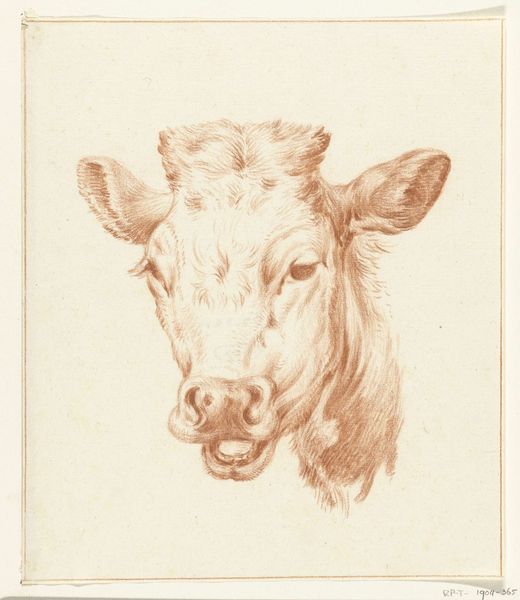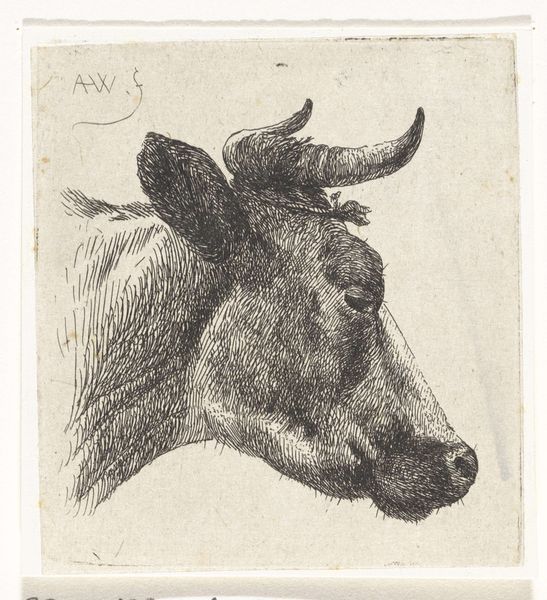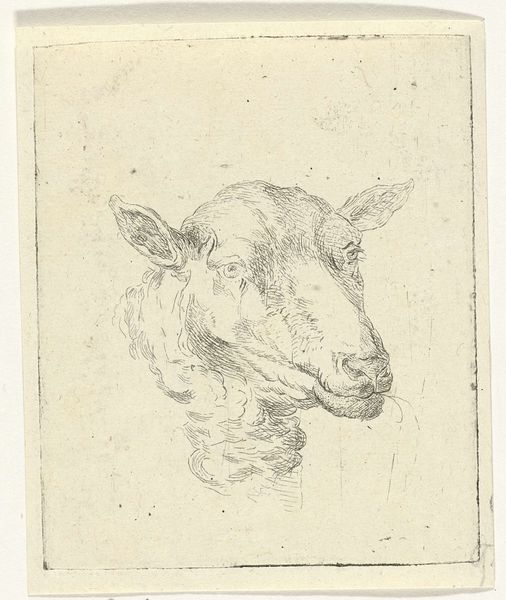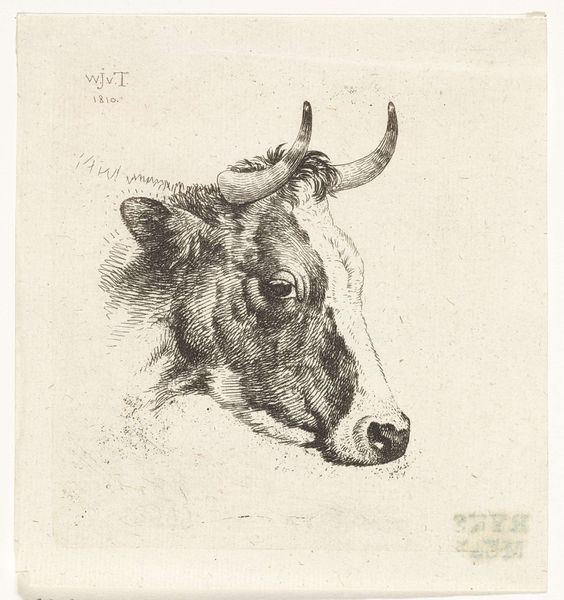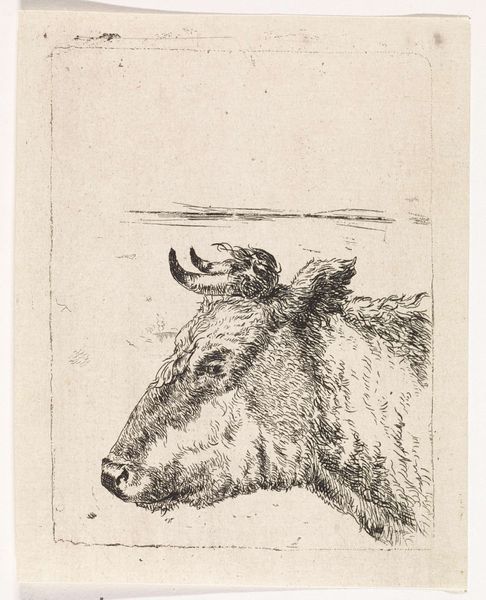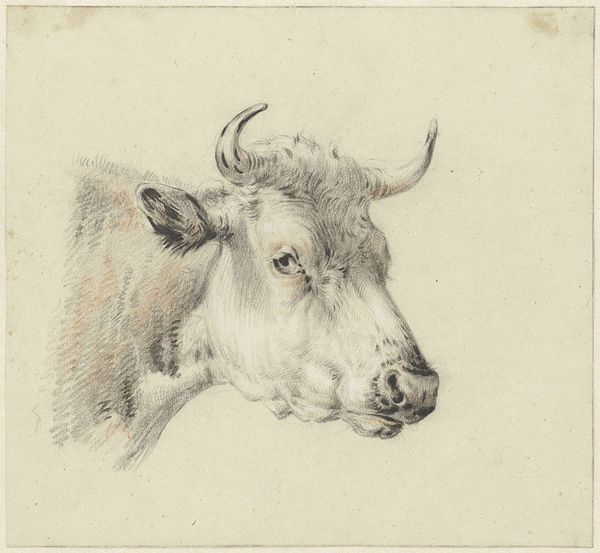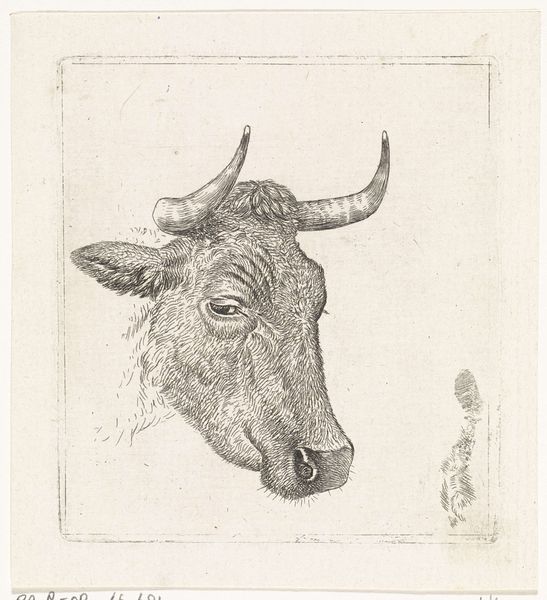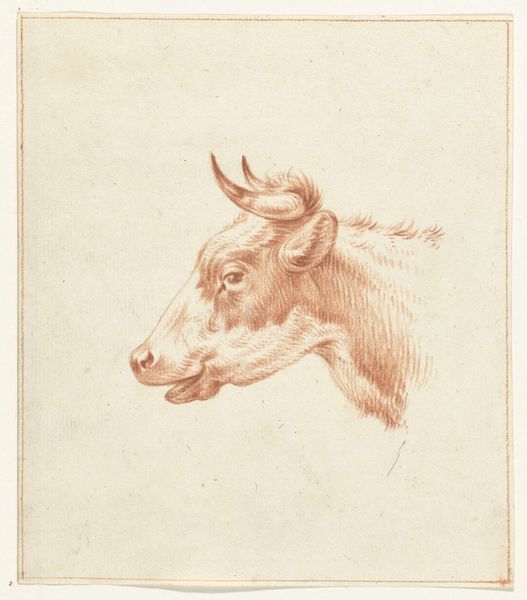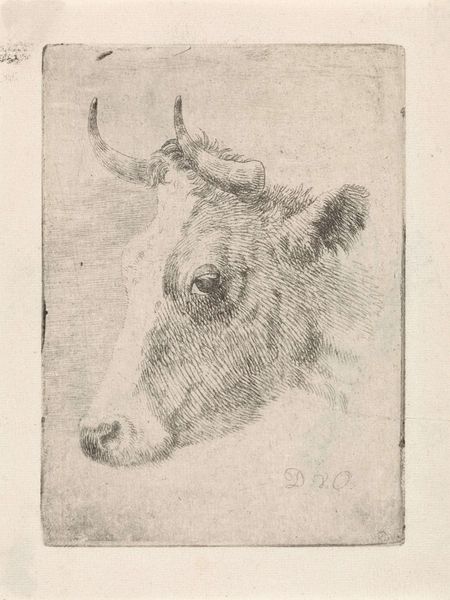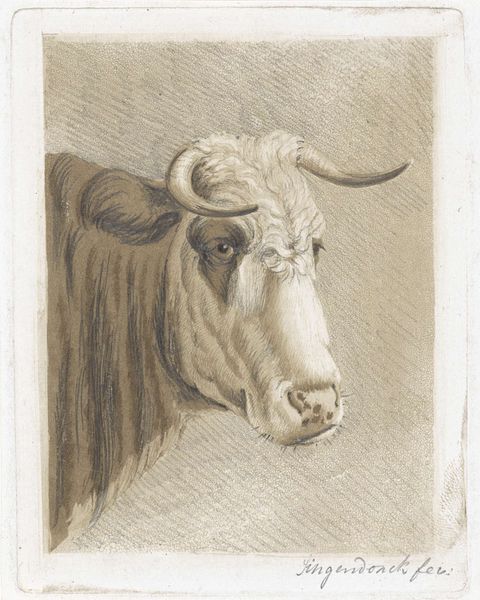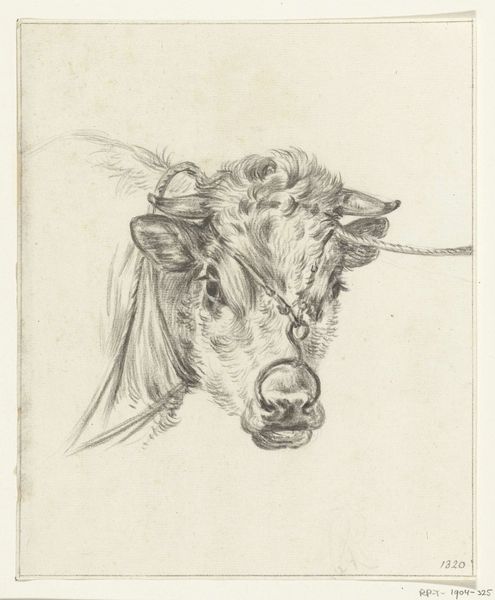
drawing, dry-media, pencil
#
portrait
#
pencil drawn
#
drawing
#
amateur sketch
#
light pencil work
#
pencil sketch
#
dry-media
#
personal sketchbook
#
pencil drawing
#
romanticism
#
pen-ink sketch
#
pencil
#
sketchbook drawing
#
pencil work
#
sketchbook art
#
realism
Dimensions: height 107 mm, width 102 mm
Copyright: Rijks Museum: Open Domain
Curator: This intriguing drawing, rendered in pencil, is entitled "Kop van een koe," or "Head of a Cow," and dates from somewhere between 1775 and 1833. It resides here at the Rijksmuseum. Editor: What immediately strikes me is the simplicity, almost austere. The monochrome palette emphasizes the cow's heavy-lidded gaze, creating a rather somber, reflective mood. Curator: Yes, the artist, Jean Bernard, utilizes a very economic, almost rudimentary, compositional structure. Notice the relatively simple cross-hatching to describe the volume and the stark white of the untouched paper. There is no background to speak of, focusing our attention solely on the animal's physiognomy. Editor: And what a wealth of cultural associations that seemingly straightforward image evokes! In many cultures, the cow symbolizes nourishment, maternal care, even sacrifice. That downward gaze invites contemplation, perhaps even a recognition of our dependence on these creatures. Curator: Interesting. But I also read this through a formal lens. Look how the curved lines of the horns echo the curve of the eye socket, creating a visual rhyme. Consider how that repetition of form adds to a cohesive, stable visual experience, drawing the viewers' eye across the subject’s entire head. Editor: Absolutely, and the angle of the head, slightly turned, prevents it from being merely representational. There’s a sense of observation, a recorded moment, like the cow has just noticed us. In religious art the head, the intellect, is crucial in signifying importance of humans, of spiritual figures… Curator: The piece definitely presents some ambiguities and invites different interpretations and even contradictory insights that are based both in formal terms and broader meaning systems. Editor: Exactly. By carefully examining the animal’s depiction in relation to our beliefs about the symbolic place it occupies in the culture, we gain more appreciation.
Comments
No comments
Be the first to comment and join the conversation on the ultimate creative platform.
